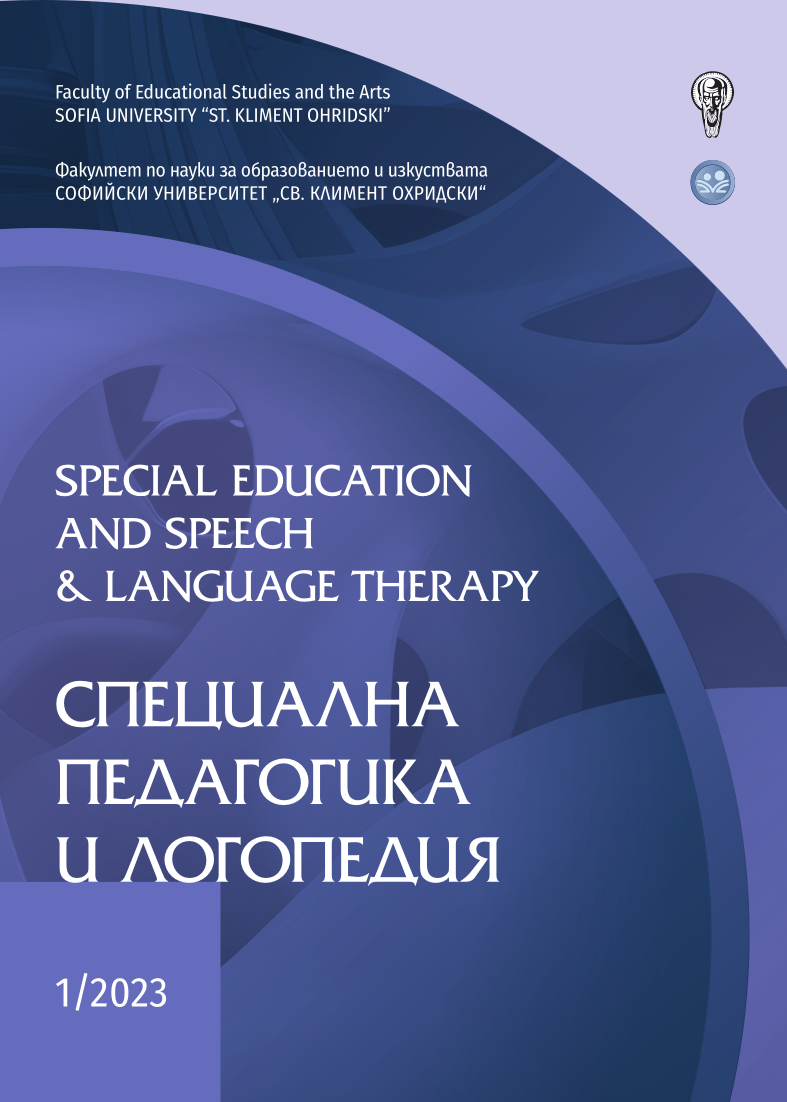РИТЪМ И ПАУЗА – РАВНИЩА НА ВЛАДЕЕНЕ ПРИ УЧЕНИЦИ С УВРЕДЕН СЛУХ В НАЧАЛНА УЧИЛИЩНА ВЪЗРАСТ
Ключови думи :
ритъм, пауза, равнища на владеене, ученици с увреден слух, корекция на прозодиката на речтаАбстракт
Статията представя изследване за нивото на владеене на ритъм и спазване на пауза при ученици с увреден слух от начална училищна възраст. Усещането за ритъм се предопределя генетично в
известна степен у всеки един от нас. Поради това можем да приемем, че и при учениците с увреден слух под влияние на прилаганите ритмични упражнения то се развива според индивидуалните им възможности.
Умението за идентификация на пауза и възпроизвеждане на елементарен ритъм е обследвано с Тест за оценка на организацията на времето чрез имитиране на ритмични структури по метода на Myra Stamback, адаптиран към особеностите на децата с увреден слух (Георгиева-Дървеничарска, 2008). Изследваните ученици са от начална училищна възраст, с различни слухови протези – конвенционални слухови апарати и кохлеарни импланти. Чрез стимулиране развитието на това умение се цели корекция и усъвършенстване на езиково-говорната им функция на по-високо равнище.
Файлове за сваляне
Публикуван
Брой
Раздел (Секция)
Лиценз
Авторски права (c) 2023 Галя Георгиева-Дървеничарска

Публикация с Creative Commons Attribution 4.0 International License.

